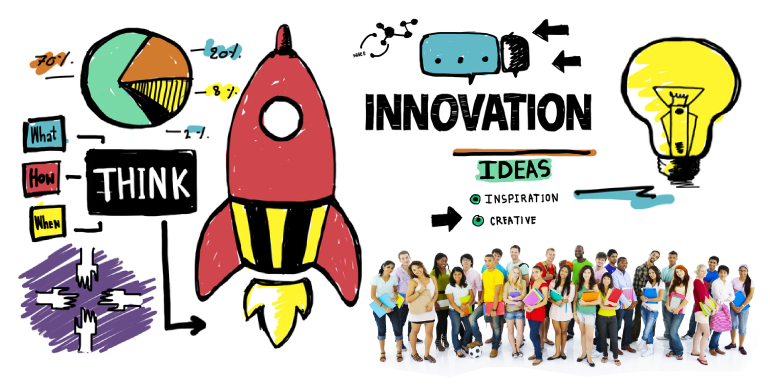

Agility and adaptability defining perennial success for today's organizations
It is not the strongest species that survive, nor the most intelligent,
but the ones most responsive to change.
Charles Darwin's theory of evolution can well be coined in the business scenario as the "theory of staying great forever".
Reports indicate that only less than 20% of the Fortune 500 companies of 1955 exist today. The rest faded away, merged with larger companies, went bankrupt, or currently have just a humble existence.
Compaq became the world’s largest supplier of PCs during the 1990, with its competitively priced, trusted PCs, and was known to be one of the youngest firms to be part of the Fortune 500. However, the story came to a sorry end when the company was acquired by Hewlett-Packard and the brand name Compaq disappeared from the US.
The reason for their failure: unplanned acquisitions rather than focusing on tapping on industry trends or innovating in their area of expertise
Borders were the leaders of the books industry, but with the advent of online reading options, the brick-and-mortar bookshops slowly lost their flavor. Unfortunately, Borders could not match its steps with the changing demands of book lovers and announced closure of hundreds of stores, laying off thousands of workers.
The reason for their failure: their unwillingness to adapt to change
The lesson learnt from these experiences: change now or die slowly. All these organizations were the dinosaurs of their era but have just a fossilized existence today. In the race to be the best, what would your choice be - the fierce puma or an extinct dinosaur?
The puma of course!
The business world has plenty of pumas to look up to as examples - from Amazon, who perennially revolutionize e-commerce by disrupting the landscape, to Apple, where constant innovation and reinvention has challenged most its competitors into silence.
What are the characteristics of a puma organization?
Every current marvel is the result of a focused effort of looking out for "the next big wave", embracing the change smoothly, and figuring out how we can get ahead of the change to provide futuristic solutions. So, what makes an organization a racing puma?
- People with immense passion - James Collins advocates, "great vision without great people is irrelevant". This is indeed true. Companies focusing on getting the right people on board who share the organization's vision get their first step to success right.
- Ability to perennially work toward change - any organization that thinks it is perfect or near perfect has taken its first step toward failure. Make consistent, disciplined, recorded effort to meet the change goal to create the "planned revolution".
- Quality more than quantity: a shepherd manager with a bigger flock is no longer considered successful - small, cohesive teams create large waves. Jeff Bezo's two-pizza rule can be extended to effective team functioning too - never have a team where you need more than two pizzas to feed the team members.
- No more spoon-fed employees- giving employees the freedom to figure out how to add value will help unleash their creativity and bring out the best in them.
- A transparent information sharing system - sharing the harsh truth with your team of trusted employees will definitely bring out much better results than creating a false sense of security followed by sudden disaster.
- Creating buddy work culture: This is the Gen-Y world - there are no more cabins - workspace is one open floor with hardly any vertical hierarchy. Age no longer signifies designation in the company. Ben Whittaker from The Intern represents the latest trend in workplaces - more and more "elders" are reinventing themselves by taking new roles in workplaces. Current organizations are certainly a boiling hotpot of people from their 20s to even 70s. This changing trend has opened up buddy culture within organizations as it encourages spontaneous participation - from ringing bells in the office for appreciation to even offering massage as a gift for good work!
- Embrace change or perish: Anyone not willing to take risk - even if it means the CEO - has to leave. "Experience" no longer refers to the "number of years"; it's the ability to create a difference and reinvent oneself with every challenge.
Today's organizations need chameleons who can easily adapt to changing needs, who can take on new challenges with ease, and who can identify with the organization's futuristic direction. Organizations too need to make a conscious choice to be perennially great - the only way to stay great is to constantly challenge your boundaries and to move swiftly from one success to the other like a puma, else your organization would land up being a fossilized dinosaur in the museum of ancient organizations. The choice is yours.
Frequently Asked Questions (FAQs)
Enterprise asset management (EAM) involves the management of mission critical assets of an organization throughout each asset's lifecycle. EAM is used to plan, optimize, execute, and track the needed maintenance activities with the associated priorities, skills, materials, tools, and information. The aim is to optimize the quality and utilization of assets throughout their lifecycle, increase productive uptime and reduce operational costs.
Enterprise asset management (EAM) involves the management of the maintenance of physical assets of an organization throughout each asset's lifecycle. EAM is used to plan, optimize, execute, and track the needed maintenance activities with the associated priorities, skills, materials, tools, and information.
The software helps in effective maintenance of assets through preventive, predictive, shutdown and breakdown maintenance strategies. The system also helps enterprises mitigate equipment risks by enhanced safety standards. The streamlined operations and improved asset performance helps organizations increase their investment effectiveness.
EAM is important because it helps organizations track, assess, manage and optimize asset quality and reliability. Asset intensive Organizations have hundreds, thousands, even millions of assets which needs to be maintained to maximize / optimize life of these assets to increase the return on investment.
The key features of effective EAM are:
- Work management.
- Maintenance Strategies (Preventive/ Predictive / Breakdown / Shutdown).
- Planning and scheduling.
- Supply chain management.
- Health and safety.
- Mobility.
- Analytics.
- Improved Asset Health at reduced cost through data driven maintenance Programs
- Complete visibilityon entire maintenance data across Equipment, across Models, across Branches to aid in analysis & decision making such as to Repair or Replace the Equipment
- Insightful analysis of Inspection Data to improve customer satisfaction
- Effective maintenance management enhanced by predictive maintenance and inbuilt analytics
- Increased reliability and safety, keeps complete track of all the inspections & calibration schedules
- Mobile Application enables users to execute work while “in the field” leading to minimized non-productive time and increased productivity and reduces duplication of work and human errors in recording information.
- Quick turnaround time through Actionable Notification & Alerts for every process in real time and accessible anytime and anywhere.
- Improved Regulatory Part of asset management involves the implementation of better O&M practices, which can significantly improve compliance.
Asset Intensive companies under the following Industries :
- Ports
- Cement and Mining
- Utilities
- Fleet Maintenance
- Equipment Rental
- Other Manufacturing
- Real Estate & Infrastructure
- Power Generation
Contact us for a meeting and schedule a demo
This differs on case to case basis, based on the type of installation and unique industry specific requirements. Contact us for a meeting and schedule a demo.
This differs on case to case basis, based on the type of installation and unique industry specific requirements. Contact us for a meeting and schedule a demo.
Stay Connected, follow us on LinkedIn / Twitter to know more about EAM Software latest trends.


